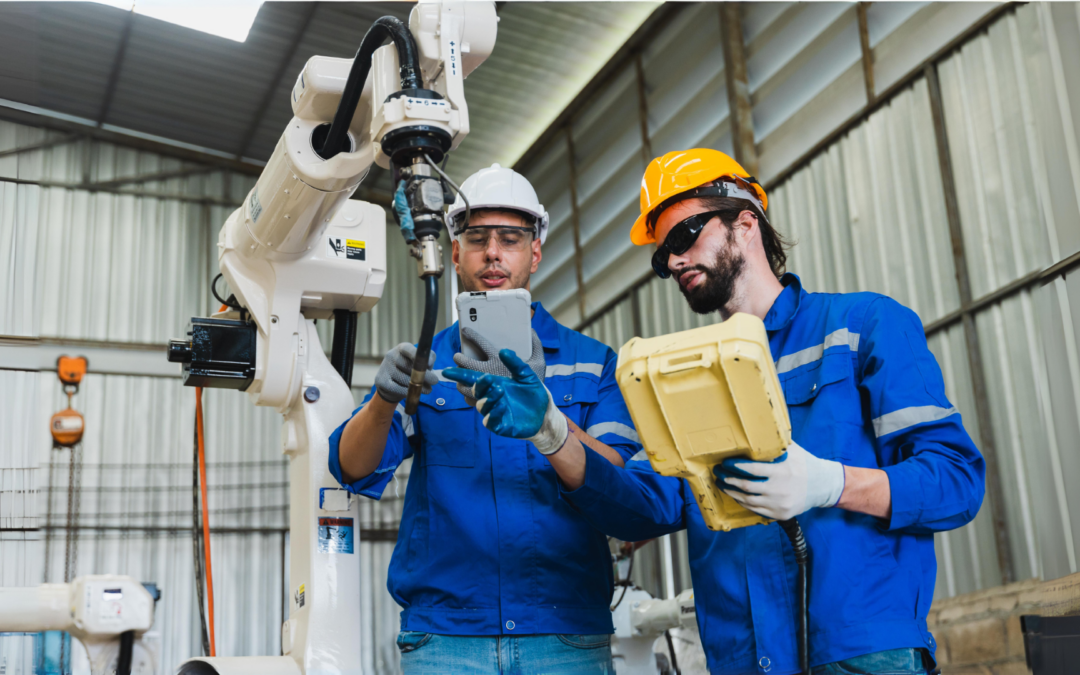Whether you are in manufacturing, facility management, or any other industry that relies on equipment, CMMS can help optimize asset performance, reduce downtime, and ultimately save you time and money.
But what exactly is CMMS and how does it work? Let’s dive into the details and discover the benefits it can offer to your business.
The Basics of CMMS
At its core, a Comprehensive Maintenance Management System is a software solution designed to centralize and simplify the management of maintenance tasks.
It serves as a digital hub for tracking, analyzing, and optimize all aspects of maintenance operations within an organization.
CMMS is more than just a maintenance tool; it’s a strategic asset that enhances operational efficiency, reduces costs, and extends the lifespan of equipment.
Historical Development and Evolution
The concept of CMMS dates back to the 1960s when early versions of computerized maintenance management systems were primarily used by large enterprises and relied on punch cards and IBM mainframes. Over the years, it evolved with the advancement of technology.
In the 1980s and 1990s, as computers became more affordable and connected, CMMS gained popularity among smaller and mid-sized businesses. Local area networks (LANs) enabled the sharing of maintenance information, and the 2000s witnessed the expansion of CMMS capabilities to mobile devices and field applications through intranets and web-based connectivity.
Today, it has entered a new era with the emergence of cloud-based solutions, offering greater functionality, faster implementation, easier maintenance, and enhanced data security.
What is CMMS: Key Components and Functionalities
A typical CMMS blends various components and functionalities that create a powerful maintenance management tool. Key components include:
-
- Asset Registration: The first step involves entering all assets and equipment details into the CMMS. This includes information like make, model, location, and maintenance history.
- Preventive Maintenance Scheduling: It allows for the scheduling of regular preventative maintenance tasks to avoid unexpected equipment failures. These schedules are based on time intervals or usage metrics.
- Work Order Management: A work order is created when maintenance is needed. This can be triggered automatically (based on preventive schedules) or manually (in case of a breakdown). Work orders contain details like what needs to be done, the urgency, and the responsible technician.
- Inventory Management: The programme tracks the inventory of spare parts and supplies. It can alert when stock is low and needs replenishment, ensuring that necessary features are always available.
- Task Execution and Tracking: Technicians access their work orders through the CMMS, perform the required tasks, and update the system upon completion. They can log details like time spent, parts used, and observations.
- Reporting and Analytics: The software generates reports and analytics, offering insights into maintenance activities, costs, equipment performance, etc. This aids in decision-making and strategic planning.
Integration with Other Systems and Technologies
-
- ERP Systems: CMMS often integrates with Enterprise Resource Planning (ERP) systems for a seamless flow of information across finance, inventory, and human resources.
- IoT Devices: Integration with Internet of Things (IoT) devices allows for real-time monitoring of equipment health, enabling predictive maintenance.
- Mobile Accessibility: It can be integrated with mobile devices, allowing technicians to access and update work orders from the field.
- APIs: Application Programming Interfaces (APIs) enable the CMMS to interact with various other software tools and databases, enhancing its functionality and data accuracy.
User Interface and Experience Aspects
-
- Ease of Use: Modern CMMS solutions focus on user-friendly interfaces, making it easy for users to navigate, enter data, and retrieve information.
- Customizable Dashboards: Users can often customize dashboards to display the most relevant information at a glance, like pending work orders, inventory levels, and upcoming maintenance schedules.
- Training and Support: Good CMMS providers offer comprehensive training and support to ensure users can effectively utilize all system features.
- Mobile Compatibility: Many CMMS tools are designed to be mobile-friendly, allowing users to access the system from smartphones and tablets for increased flexibility.
Benefits of Using CMMS
There are numerous benefits, including:
Workflow Visibility and Work Order Management:
CMMS provides visibility into work orders, allowing maintenance teams to track the status of tasks and ensure timely completion. It streamlines the work order management process, reducing downtime and improving productivity.
Mobile Workforce:
With the advancement of technology, CMMS software now offers mobile capabilities, allowing maintenance technicians to access work orders and asset information on the go. This enhances communication and collaboration between team members, leading to improved efficiency.
Automation and Processes:
CMMS software automates various maintenance processes, such as generating work orders, scheduling preventive maintenance tasks, and managing parts inventory. This saves time, minimizes errors, and ensures consistency in maintenance practices.
Asset Lifecycle Visibility:
Organizations can effectively maintain and manage their assets and extend their lifespan. CMMS software allows users to track asset performance, schedule preventive maintenance, and quickly address any issues or repairs.
This proactive approach to asset management helps in strategic planning and budgeting, prevents major breakdowns, and extends the lifespan of equipment and machinery.
Increased Employee Productivity
By automating and streamlining maintenance processes, CMMS software frees up maintenance staff’s time, allowing them to focus on more critical tasks. This improves overall productivity and boosts employee morale and job satisfaction.
It also provides a centralized platform for communication and collaboration, allowing teams to work together more efficiently.
Applications of CMMS Across Industries
1. Manufacturing Industry:
CMMS (Computerized Maintenance Management System) is widely used in manufacturing to streamline and automate maintenance processes. It allows machine manufacturers to schedule maintenance tasks, track equipment performance, and manage work orders efficiently. By utilizing it, manufacturers can reduce downtime, optimize asset performance, and improve overall productivity.
2. Healthcare Industry:
CMMS is also valuable in the healthcare industry, where medical equipment maintenance is critical. It helps healthcare facilities track and manage equipment maintenance, ensuring that all medical devices are properly maintained and ready for use. This reduces the risk of equipment failure, enhances patient safety, and improves the overall quality of care.
3. Transportation Industry:
The transportation industry, including airlines, railways, and shipping companies, relies on CMMS to manage and maintain its fleet of vehicles and equipment.
With this software, transportation companies can monitor maintenance schedules, track repairs, and optimize maintenance costs. This helps prevent costly breakdowns, improves vehicle reliability, and ensures compliance with safety regulations.
4. Hospitality Industry:
Hotels, resorts, and other hospitality establishments can benefit from CMMS to manage maintenance tasks related to their buildings, facilities, and equipment. It allows for proactive maintenance planning, ensuring that guest rooms, common areas, and other facilities are well-maintained. This helps enhance customer satisfaction, reduces operational costs, and prolongs the lifespan of assets.
5. Energy Industry:
CMMS is widely used in the energy and utilities sector, including power plants, oil refineries, and renewable energy installations. Using CMMS, energy companies can schedule and manage maintenance activities for critical equipment such as turbines, generators, and pipelines. This helps minimize downtime, optimize energy production, and ensure compliance with safety and environmental regulations.
6. Education Sector:
Schools and Higher Education Institutes can effectively utilize CMMS to manage maintenance tasks for their buildings, classrooms, and facilities. It enables educational institutions to track work orders, schedule maintenance activities, and monitor equipment performance. This helps create a safe and conducive learning environment for students while minimizing operational costs.
7. Government and Municipalities:
CMMS is valuable for government agencies and municipalities in managing maintenance tasks for public infrastructure such as roads, bridges, parks, and utilities.
By implementing CMMS, government organizations can improve maintenance planning, track costs, and ensure timely repairs and upkeep of public assets. This leads to improved public safety, enhanced citizen satisfaction, and efficient use of taxpayer funds.
The Future of CMMS
Several emerging trends and technological advancements will significantly influence the future of Computerized Maintenance Management Systems. Here’s an overview:
Emerging Trends in CMMS Technology:
-
- AI and IoT Integration: Artificial Intelligence (AI) and the Internet of Things (IoT) are becoming increasingly integrated into CMMS solutions. AI can be used for predictive maintenance, using data analytics to forecast when equipment might fail. IoT devices, like sensors on machinery, can feed real-time data into the CMMS, allowing for more immediate and accurate monitoring and decision-making.
- Cloud-Based Solutions: The shift towards cloud-based CMMS will continue, offering better scalability, remote access, and reduced need for on-site IT infrastructure.
- Mobile Accessibility: Mobile devices in CMMS are growing, enabling technicians to access and input data on the go, increasing efficiency and real-time updating of information.
- Advanced Analytics and Big Data: As CMMS collects vast amounts of data, using advanced analytics tools will become more prevalent, enabling deeper insights into maintenance operations and equipment performance.
Predictions for Future Development:
-
- Integration with Other Systems: Future CMMS may integrate more seamlessly with other business systems, such as ERP (Enterprise Resource Planning) and EAM (Enterprise Asset Management), for a more holistic view of organizational operations.
- Customization and Flexibility: As businesses have varying needs, future CMMS solutions will likely offer greater customization and flexibility to cater to specific industry requirements.
- Enhanced User Experience: User interfaces are expected to become more intuitive, making it easier for all personnel to interact with the system.
- Focus on Cybersecurity: With the increasing reliance on digital solutions, there will be a heightened focus on cybersecurity within CMMS platforms to protect sensitive data.
These trends and developments suggest that CMMS’s future is about maintaining and managing assets efficiently, driving sustainability, and integrating with broader business systems and technologies for comprehensive operational improvement.
Conclusion
As more and more maintenance teams recognize the importance of asset management, Computerized Maintenance Management Systems have become a major driver of business success.
By providing an effective way for organizations to track and store all their assets and streamline workflow processes, it’s easy to see why understanding the value of maintaining a centralized repository is one of the most important steps in today’s maintenance management practices.
Not only is it fundamental for cost savings, but it also helps maximize operational efficiency while meeting industry standards. Don’t wait too long; start recognizing the power of Computerized Maintenance Management Systems today to remain competitive and benefit from its advantages to your business operations!
















